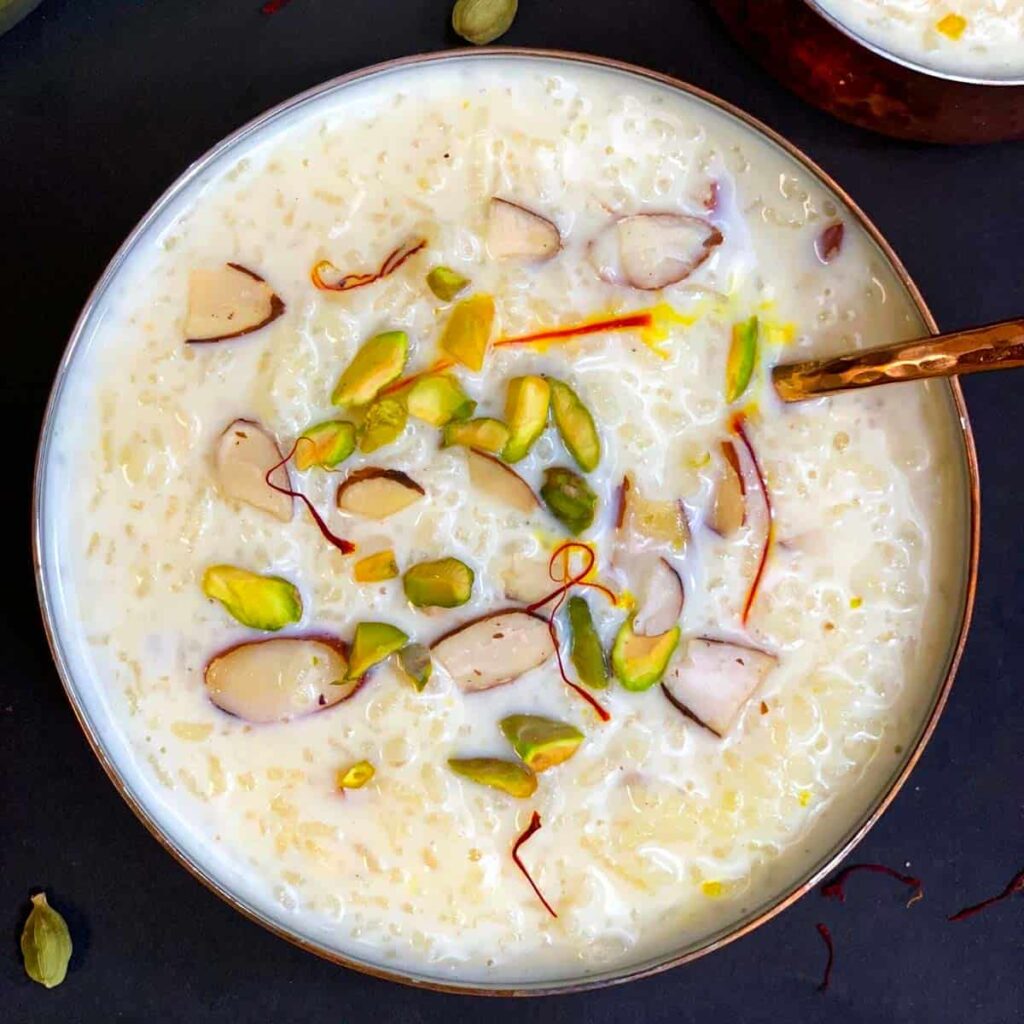Best Kheer Recipe for Various Occasions
Ingredients
- 1/2 cup Basmati rice
- 1 liter whole milk
- 1/2 cup sugar (adjust to taste)
- 1/4 cup mixed dry fruits (almonds, cashews, and pistachios), chopped
- 1/4 teaspoon cardamom powder
- A pinch of saffron strands (optional)
- 1 tablespoon ghee (clarified butter)
Instructions
Rice Preparation
- Rinse Basmati rice thoroughly until the water runs clear.
- Soak rice in water for 30 minutes, then drain.
Milk Preparation
- Heat ghee in a heavy-bottomed pan over medium heat.
- Add drained rice and sauté for 2-3 minutes until aromatic and translucent.
- Pour in whole milk and bring it to a boil.
Simmering
- Reduce heat to low and let rice simmer in milk.
- Stir occasionally to prevent sticking.
Sweetening
- Once rice is tender and mixture thickens (usually 30-40 minutes), add sugar.
- Continue to simmer and stir until sugar dissolves.
Flavoring and Garnishing
- Add cardamom powder and saffron strands (if using). Stir well.
- Sprinkle chopped mixed dry fruits, reserving some for garnish.
Serving
- Remove Kheer from heat and let it cool to room temperature.
- It will thicken as it cools. Adjust consistency with a little milk if necessary.
- Refrigerate Kheer for a few hours before serving.
- Serve chilled, garnished with more chopped dry fruits.
Enjoy your homemade Kheer, a delightful and creamy Indian rice pudding that’s perfect for any occasion.
Kheer Occasion
Kheer, a beloved Indian dessert, is prepared and enjoyed on various occasions and celebrations. It holds a significant place in Indian culture and is cherished for its creamy texture and aromatic flavors. Here are some of the occasions when Kheer is commonly made and relished:
- Festivals: Kheer takes center stage during festive occasions like Diwali, Eid, Holi, Navratri, and Raksha Bandhan. It is considered a special treat to mark these joyous events.
- Weddings: Kheer is a traditional dessert often served at Indian weddings, symbolizing sweetness and prosperity for the newlyweds.
- Religious Ceremonies: Kheer is a favored offering in Hindu temples during religious ceremonies and rituals. Devotees often bring Kheer as a prasad (offering) to present to deities.
- Birthdays: In some regions of India, Kheer is prepared to celebrate birthdays, especially in North India, adding a sweet touch to the special day.
- Anniversaries: Families may prepare Kheer on wedding anniversaries and other significant milestones as a way to commemorate the occasion.
- Pujas and Vrats: During Hindu fasting or vrats (religious observances), Kheer made without onions or garlic is a suitable dessert option.
- Guests and Celebrations: Kheer is a favored dessert to serve to guests during special occasions and gatherings at home, making any event more memorable.
- Comfort Food: On ordinary days, Kheer is often made as a comforting dessert, satisfying the craving for something sweet and creamy.
- Offerings: In Sikh gurdwaras, Kheer is frequently prepared as a langar (community meal) dessert and served to all visitors, exemplifying the spirit of sharing and community.
Kheer’s versatility and universal appeal make it a delightful treat for various celebrations and moments of joy in Indian cuisine. Its rich and indulgent taste continues to be a source of happiness and togetherness on numerous occasions.
Enjoy Chandigarh Tadka Best Kheer

